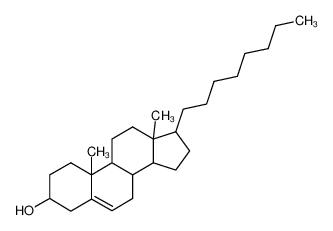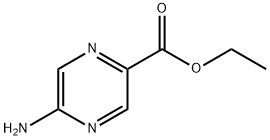Hello, I'd like to ask, what level of triglycerides is considered dangerous? And why is that? Also, does the dangerous level of triglycerides change with different age groups?
What specific diseases can be caused by having dangerous levels of triglycerides?
How does lifestyle affect the dangerous level of triglycerides?
At What Level Are Triglycerides Considered Dangerous?
Related Encyclopedia
Related Products More >
-
- 57-88-5
- Request For Quotation
- 25kg/Cardboard Drum
-
- 57-88-5
- Request For Quotation
- 1kg,25kg or according to customer's detail requirement.
-
- 57-88-5
- Request For Quotation
- 1kg Consult customer service
-
- 57-88-5
- Request For Quotation
- 25kg/package
-
- 57-88-5
- Request For Quotation
- 1kg/Aluminum Foil Bag, 5kg/Carton, 10kg/Carton, 25kg/Paper Drum, 50kg/Paper Drum
-
- 57-88-5
- Request For Quotation
- 25kg/drum
-
- 57-88-5
- Request For Quotation
- 25kg/drum
-
- 57-88-5
- Request For Quotation
- 1kg/bag;25kg/Cardboard Drum




 沪ICP备2021018848号-5
沪ICP备2021018848号-5

The dangerous level of triglycerides may vary slightly with age. In general, as people get older, the risk of high triglycerides increasing due to factors like slower metabolism and lifestyle changes. However, the specific dangerous levels do not change drastically by age. For example, a young person with a triglyceride level above 500 mg/dL is at the same risk of pancreatitis as an older person with a similar level.
When triglycerides are at a dangerous level, it can lead to various diseases, including not only pancreatitis but also an increased risk of heart disease and stroke. High triglycerides can cause fatty deposits to build up in the arteries, narrowing them and reducing blood flow.
Lifestyle plays a significant role. A diet high in refined carbohydrates, sugars, and saturated fats can raise triglyceride levels. Lack of exercise, smoking, and excessive alcohol consumption also contribute to elevated levels. On the contrary, a healthy diet, regular exercise, and avoiding bad habits can help keep triglyceride levels in a safe range.
Why High Triglycerides Are Dangerous
Triglycerides are a type of fat (lipid) in the blood that provide energy. However, excessive levels contribute to:
Arterial plaque buildup, increasing heart attack and stroke risk.
Pancreatitis (inflammation of the pancreas) at very high levels (>500 mg/dL).
Metabolic syndrome, linked to insulin resistance and obesity.
Dangerous Triglyceride Levels by Age Group
While general guidelines apply, optimal levels vary slightly with age:
Age Group Normal (mg/dL) Borderline High High Risk Very High/Dangerous
Children & Teens <90 90-129 130-199 ≥200
Adults (20-60) <150 150-199 200-499 ≥500
Elderly (60+) <150 150-199 200-499 ≥500
Note: Older adults often have higher baseline levels due to metabolic slowdown.
Diseases Linked to High Triglycerides
Cardiovascular Disease – Atherosclerosis, coronary artery disease, stroke.
Acute Pancreatitis – Life-threatening inflammation at levels >500 mg/dL.
Type 2 Diabetes – Insulin resistance worsens with elevated triglycerides.
Fatty Liver Disease – Excess lipids accumulate in the liver.
Lifestyle’s Impact on Triglyceride Levels
Factors That Increase Triglycerides:
High-sugar diets (soda, sweets, refined carbs).
Excess alcohol (boosts liver triglyceride production).
Sedentary habits (reduces fat metabolism).
Obesity (fat cells release more triglycerides).
How to Lower Triglycerides Naturally:
Diet: Focus on omega-3s (fatty fish, flaxseeds), fiber (oats, beans), and healthy fats (avocados, nuts).
Exercise: 30+ minutes of daily activity (walking, cycling) helps burn triglycerides.
Limit Alcohol & Sugar: Even small reductions can significantly lower levels.
Weight Management: Losing 5-10% body weight can reduce triglycerides by 20-30%.
When Medication Is Needed:
If lifestyle changes fail, doctors may prescribe:
Fibrates (e.g., fenofibrate) – Best for very high triglycerides.
Statins – If cholesterol is also elevated.
Omega-3 supplements (high-dose EPA/DHA).
In daily life, managing triglyceride levels is crucial. For instance, lifestyle changes such as adopting a diet low in saturated fats and sugars, regular physical activity, and weight management can help lower triglyceride levels. An example scenario might involve someone diagnosed with high triglycerides who starts a routine of walking 30 minutes daily and reduces intake of sugary drinks, leading to improved lipid profiles over time.
It's important to be aware that very high triglyceride levels can also be indicative of other underlying health issues, such as poorly controlled diabetes, hypothyroidism, or liver and kidney diseases. Regular monitoring and consulting healthcare providers are essential steps in managing these risks. Moreover, certain medications like statins or fibrates might be prescribed to manage high triglyceride levels effectively. Understanding the risks associated with elevated triglyceride levels empowers individuals to take proactive steps towards better health.